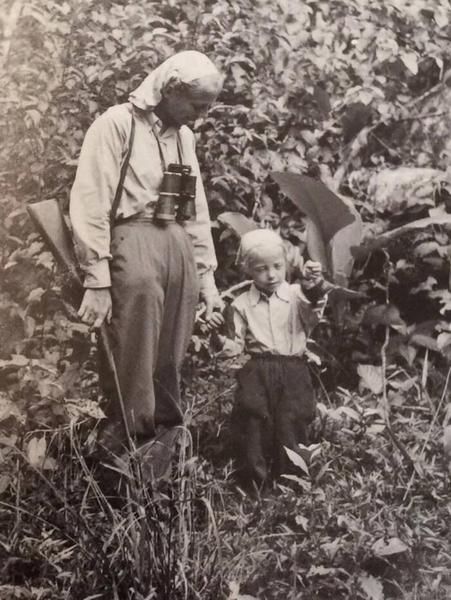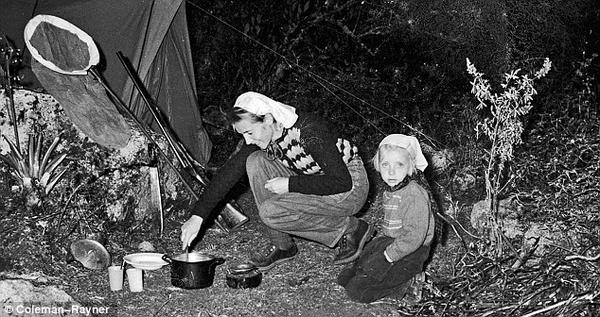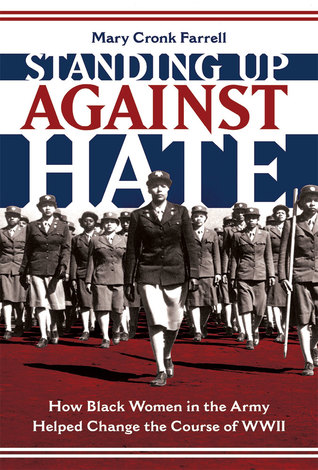March 8, 2024 Hello , I'm doubling down on the revision of my young adult mystery novel, so this week's feature story is from the archives. I love revisiting this amazing girl who survived eleven days alone in the Amazon after a plane crash. Enjoy the in-depth story with lots of photos and Juliane's own words! Most people say Juliane survived because her scientist
parents schooled her in their research of the rain forest. And it's true that as a child she spent a lot of time with them at their research station where the Amazon Rain Forest was her playground.
Juliane Koepcke, born in Lima, Peru, her parents both zoologists. Photo courtesy Juliane Koepcke /Instagram But my take: all the knowledge in the world could not have saved Juliane if it were not for her indomitable spirit. What saved this teenager was her ability to keep pushing on when everything seemed hopeless. It was Christmas Eve, 1971. The Lockheed L-188A Electra took off from Lima for on a flight to Pucallpa, Peru, an easy one-hour flight. Halfway
into the trip, around noon, the plane flew into a heavy storm that darkened the sky outside the windows like night. Moments later lightning struck the plane, which is actually common. Usually, lightning strikes on passenger planes cause little trouble. But this one caught the plane's engine on fire.
How Juliane Survived Plane Crash Alone
Juliane Koepcke sat by the window in the second to the last row. Her mother was next to her, and
another passenger completed their row of three seat. In the two days before the 17-year-old had graduated from high school and attended a school dance. Her mother had
wanted to fly home to join Juliane's father for the holiday sooner, but Juliane begged to attend these last events in the city with her friends. Her mother agreed. Below: Juliane Koepcke on the night of her school dance, photo
courtesy of Juliane Koepcke.
Maria and Hans-Wilhelm Koepcke had immigrated to Peru from Germany to study animal
sciences in the Peruvian rainforest, Maria, had become a ground-breaking ornithologist and Hans-Wilhelm, a celebrated zoologist. Their daughter Juliane was born in Lima and grew up there speaking German at home and Spanish at school. She first accompanied her mother on a research trip to the field when she was five years old.
Maria Koepcke wrote a letter to a friend in Germany, describing her daughter on the trip in the rainforest.
“She
copes amazingly well with any situation, such as sleeping in a tent or in a sleeping bag on a rubber mattress, whether on the beach or on a boat. For her, these are all interesting things.
"And you have to imagine the atmosphere on the Rio Pachitea: the dim morning or evening with dense fog, the calls of the howler monkeys, the river silvery green, close to the boat
the high wall of the dark jungle, from which the many-voiced concert of the crickets and cicadas sounds. You feel as if you’re really in primordial nature. "Juliane was probably most excited about the blooming trees and the diversity and beautiful shapes of the leaves. She has already collected a herbarium . . .” When Juliane was 14 years old, the family moved to a remote area in the virgin Amazon and established Panguana Ecological Research Station. Juliane was home-schooled, though you might say jungle schooled. (In the 1960s the Amazon rainforest was referred to as a jungle.)
Juliane returned to Lima for high school after living nearly two years at the research station, but returned to Panguana for summer vacations and holidays, which was where her father waited that Christmas Eve, as the plane carrying his
wife, daughter and 90 passengers and crew members fell from the sky. Juliane saw a bright flash of light on the plane's wing, and then "an invisible power begins to shake our airplane as if it were a plaything. The people cry out as objects fall on their heads from the violently opened overhead compartments. Bags, flowers, packages, toys, wrapped gifts, jackets
and clothing rain down hard on us; sandwich trays and bags soar through the air; half-finished drinks splatter on our heads and shoulders. "Hopefully this will go all right," my mother says nervously." "With a jolt, the tip of the airplane
falls steeply downward. Even though I’m in a window seat all the way in the back, I can see the whole aisle to the cockpit, which is below me. The physical laws have been suspended; it’s like an earthquake. No, it is worse. Because now we’re racing downward. We’re falling. People are screaming in panic, shrill cries for help...over everything, clear as glass, I hear my mother saying quite calmly: “Now it’s all over.” We’re falling fast. People’s shouts and the roar of the turbines suddenly go silent. My mother is no longer at my side, and I’m no longer in the plane. I’m still strapped into my seat on the bench. I’m alone. And I’m falling.
"My free fall is quiet. I see nothing around me. The seat belt squeezes my belly so tight that I can’t breathe.
Before I feel fear, I lose consciousness."
Juliane plunged 10,000 feet, nearly two miles, to the ground. Nearly thirty years later, Juliane returned to the site where she landed.
Immediately after the crash, there are no assurances that she will survive. "When I regain consciousness, I’ve landed in the middle of the jungle. My seat belt is unfastened, so I
must have woken up at some point. I’ve crawled deeper into the sheltering back of the three-seat bench that was fastened to me when I fell from the sky. Wet and muddy, I lie there for the rest of the day and night.
I will never forget the image I see when I open my eyes the next morning. The crowns of the giant trees above me are suffused with golden light, bathing everything in a green glow. I feel
abandoned, helpless and utterly alone.
My mother’s seat beside me is empty. I can’t stand up...I can’t see straight. I realize that my left eye is swollen shut; I can see only through a narrow slit in my right eye. My glasses have disappeared.
"After a while, I manage to rise
to my knees, but I feel so dizzy that I immediately lie back down. I try again, and eventually I’m able to hold myself in that position.
I touch my right collarbone; it’s clearly broken. I find a deep gash on my left calf, which looks as if it has been cut by a rough metal edge. Strangely, it’s not bleeding.
I get down on all fours and crawl around,
searching for my mother. I call her name, but only the voices of the jungle answer me.
It would be a full day and a half, before Juliane was able to get up and start walking. Before setting off she found a bag of candy that would be her only food for the next eleven days. She remembered her father's advice if she was lost. "He said if you find a creek, follow it because that will lead to a stream and a stream will lead to a bigger river and that's where you'll find help." And that's what she did.
Juliane and her mother padded a Peruvian river, circa 1968.
Juliane's familiarity with Peruvian streams and rivers helped her avoid danger. Walking in
the water took less energy than fighting her way through difficult terrain and heavy vegetation, but nothing about this trek was easy.
"I know stingrays rest in the riverbanks, so I walk carefully. Progress is so slow that I decide to swim in the middle of the river instead—stingrays won’t venture into the deep water. I have to look out for piranhas, but I’ve learned that fish are dangerous only in
standing water.
"Sometimes I would see a crocodile on the bank and it would start into the water towards me, but I was not afraid. I knew crocodiles don't tend to attack humans. Much of what grows in the jungle is poisonous, so I [kept] my hands off what I don’t recognize. But I drink a great deal of water from the stream." A small injury on Juliane's upper arm grew more serious as the days passed. Flies laid eggs in the wound and they started to hatch maggots under her skin. Juliane feared her arm would have to be amputated. Once the family's dog had a sore like this and she knew she needed to get the maggots out but wasn't able to. On the
fourth day after the crash, she heard two things, first the vultures, whose cries she recognized knew what they meant. Continuing around a bend in the stream, she saw a row of three seats driven into the earth. “I couldn’t really see that much. Only people’s feet pointing up." Then she heard the sound of planes circling above her, and though she waved
from the streambank, they couldn't see her and flew away. "Intense anger overcomes me. How can the pilots turn around, now that I’ve finally reached an open stretch of water after all these days? Soon, my anger gives way to a terrible despair. But I don’t give up. Where there is a river, people cannot be far away."
Juliane hunting butterflies on the Río Yuyapichis, (1968/1969) "I’m getting weaker. I drink a lot of river water, which fills my stomach, but I know I should eat something. "As the days wear on,
my eyes and ears fool me. Often I’m convinced I see the roof of a house on the riverbank or hear chickens clucking. I am so horribly tired.
I fantasize about food, from elaborate feasts to simple meals.
"Each morning it gets harder to stand up and get into the cold water. Is there any sense in going on? Yes, I tell myself. I have to keep
going. "I spend the tenth day drifting in the water. I’m constantly bumping into logs, and it requires a great deal of strength to climb over them and not break any bones in these collisions." But that day she woke from a nap on the riverbank to see a small boat tied up.
She was so happy she thought she might be imaging it. It was real, and she found a path up the bank to a small small shelter where she found the boat engine and a can of diesel fuel. Remembering how her father had treated the dog, she poured diesel on her wound. The pain was excruciating, but the maggots rose to the surface and she picked off dozens of them. The dear girl did not want to steal the boat and
decided to stay and rest, sure that people would come for the boat soon. But no one came that day and she decided to rest the night before walking further. But the next day it rained, and she was so tired. I crawl into the shelter and wrap a tarpaulin sheet around my shoulders. The rain stops in the afternoon. I no longer have the strength to struggle to my feet. I tell
myself that I’ll rest at the hut one more day, then keep moving. As night once again approaches, Juliane hears voices, but believes she is imagining them until three men come out of the forest and stop in shock. 'I'm a girl who was in the LANSA crash,' I say in Spanish. 'My name is
Juliane."
It was January 3. The lumber workers give her food and care for her wounds. Then it is a seven-hour boat trip to a small town, where she's treated by missionaries. A pilot happens to be staying there and flies her on her two-prop plane to Pucallpa, where her father is waiting for her.
"I finally saw my father. He could barely speak, and for the first few minutes we just hugged." Juliana was able to explain the route she had traveled and authorities
found the wreckage and recovered and identified all 91 of the dead. "Later I found out that [my mother] also survived the crash but was badly injured and she couldn't move. She died several days later. I dread to think what her last days were like." Thirteen other passengers had also survived the fall from the plane, but died before they could be rescued.
Juliane and her father, courtesy of thejournaylist.com. Twenty-five years later, Juliane returned to the scene of the plane crash, along with Director Werner Herzog as he filmed the documentary Wings of Hope for German television. Herzog wanted to do the project because he barely escaped being on the plane when it went down. He had reservations for the same flight, but canceled due to a last minute change in plans. “Everything was overgrown with plants,” she said. The documentary crew had to build a clear a path to the wreckage. The pieces of the downed
plane remained where they had fallen decades before.
Juliane and Werner Herzog at the site of the plane crash, 1998.
After surviving the tragic accident, Juliane and her father returned to Germany. She carried on her parents' interest, earning a degree in biology and eventually returning to Peru to do extensive research on bats. Most lately, Juliane worked as librarian at the Bavarian State Collection of Zoology in Munich, Germany, where she lives with her husband Erich Diller. They traveled to Panguana in 2015.
Later in life, Juliane followed her parents into the field of biology. Juliane Diller has
continued to be haunted by the fact that she was the sole survivor of the plane crash. But she is not afraid to fly on planes and still loves the rainforest. The truth is: For me it was never a “green hell.” When I plunged to earth from such a great height, the forest saved my life. Without the leaves of trees and bushes cushioning my fall, I never could have survived
the impact on the ground. When I was unconscious, it screened me from the tropical sun. And later it helped me find my way out of the untouched wilderness back to civilization. In the end, it was both knowledge and will that enabled Juliane to survive eleven days alone in the wilderness of the Amazon Rain Forest.
Like my article today? Please forward to friends or share on social media.
Sources https://tppahanshilhorst.wordpress.com/2018/11/03/when-i-fell-from-the-sky-the-true-story-of-one-womans-miraculous-survival-juliane-koepcke/
https://panguana.de/about-us/juliane-diller/?lang=en
https://thejournaylist.com/experience/the-teenager-who-fell-to-earth-and-survived-to-tell-her-story/
https://www.9news.com.au/world/juliane-koepcke-german-teen-plane-explosion-survivor-peru-amazon-jungle-survival-story/8d5ea207-6dd3-4a88-9d18-a52194566cb0
https://www.dailymail.co.uk/news/article-2418765/Juliane-Koepcke-fell-10-000ft-earth-plane-crash-lived.html
https://tech.onliner.by/2018/02/24/koepcke
https://www.rainforestcruises.com/jungle-blog/the-story-of-juliane-koepcke
Forty years after her ordeal, Juliane Ditter was finally ready to tell her story, publishing her autobiography, which tells the story of her amazing survival and her life as a
scientist.
From a review on Amazon: This is not only a story of a young girl's survival from a plane crash, it is also an amazing look into part of the Peruvian rainforest.
Brilliant descriptions of life in this rainforest including the flora and fauna, contribute to the important task of rainforest preservation.
In the State of Maryland, March 9th is officially 6888th Central Postal Directory Battalion Day to remember and honor all black, all female sector of the Women Army Corp (WAC). During WWII the battalion sorted and sent on a huge backlog of letters and packages meant for soldiers fighting in Europe. These women went for decades with no attention. When I wrote my book Standing up
Against Hate in 2019 hardly anyone had heard of them. Now, though all but a handful have died, they are getting the recognition they deserve.
To
celebrate Women's History Month, the Library of Congress will focus it Veterans History Project on the Women of the 6888th Battalion. The LOC features multi-media first-person pictures and interviews to give detailed perspectives. They focus on two women, both featured in my book, Fannie Griffin McClendon, a 3-war veteran with over 20 years of service and Alyce Dixon, who joined the Women’s Army Corps in 1943.
Follow me on social media
This newsletter is a reader-supported publication. To support my work, consider becoming a paid subscriber.
Read
a great book? Have a burning question? Let me know. If you know someone who might enjoy my newsletter or books, please forward this e-mail. I will never spam you or sell your email address, you can unsubscribe anytime at the link below. To find out more about my books, how I help students, teachers, librarians and writers visit my website at www.MaryCronkFarrell.com. Contact me at MaryCronkFarrell@gmail.com. Click here to subscribe to this newsletter. |
|
|















